
Summary of movement
In the 21st century, some new forms of millenarianism emerge from science rather than religion. At first this may seem surprising since scientists are not given to eschatological speculation. However, the use of mathematical models and precise predictions is important in millenarianism. The day and the hour of the end can be calculated. When estimating what will happen in the near and distant future, scientific prediction is a form of prophecy. Scientific predictions concerning what will happen in hundreds and thousands of years into the future has established ‘scientific millenarianism’ in which ‘millenarianism now possesses bona fide scientific components’ (Weinberg 1999, 936).
Of all the scientific predictions of the end of the world, the most urgent is anthropogenic climate change, which Sergio Fava, in his Panacea Charitable Trust funded research, calls ‘the most complex apocalyptic narrative’ (2013, 1). The burning of fossil fuels has been the basis of the industrial economy since the invention of the steam engine in the 18th century. The combustion of coal, oil, and natural gas produces carbon dioxide and other greenhouse gases which are released into the atmosphere, trapping heat, and warming the planet. Global temperatures have already risen 0.56 ℃ in the past hundred years and they are forecast to rise a further 4–6 ℃ above pre-industrial levels by 2100 (Romm 2016, xv).
Rising temperatures, deforestation, and human activity are also leading to a catastrophic loss of biodiversity that some scientists are calling the ‘sixth mass extinction event’ (Kolbert 2014). The well-documented disintegration of the Greenland and Antarctic ice sheets is contributing to a sea-level rise of between 80ft and 260ft. This has occurred a hundred years sooner than initial scientific estimates. It is close to an irreversible tipping point after which total collapse would be inevitable (Romm 2016, xv). This in turn causes an increase in extreme weather events such as storm surges, forest fires, and heat waves. Since the majority of greenhouse gases are absorbed into the oceans rather than the atmosphere, there is also the ongoing problem of ocean acidification. Carbon dioxide dissolves in seawater to create carbonic acid, killing marine life and contributing to the bleaching of coral reefs (Romm 2016, 17–18). Another ‘feedback loop’ occurring is the melting of the Arctic permafrost, which could release 1.8 trillion tonnes of methane into the atmosphere rapidly and irreversibly increasing the rate of global warming (ibid, 80–84).
These alarming predictions outline an apocalyptic scenario unfolding right now. The end of the world is no longer near, it is here. It was brought on by human, not divine, intervention. The human impact on the Earth’s systems has led academics to label the current geological age the Anthropocene. In some models, the Anthropocene is also the apocalypse. This has brought a range of questions such as have humans doomed themselves? Who will save the world? Should the world be saved?
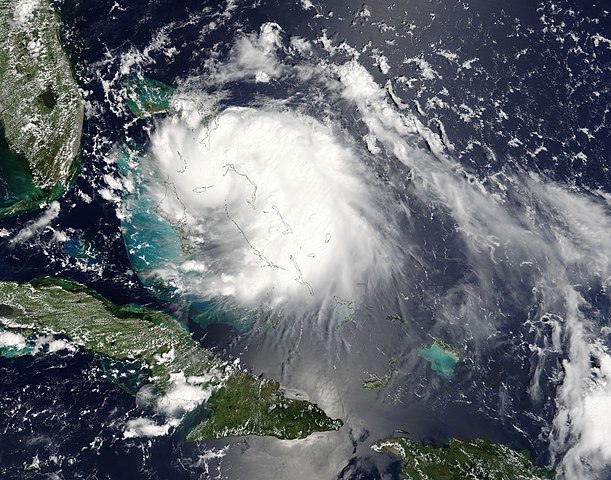

History/Origins
Although climate change seems like a new concept, the atmospheric effects of increasing carbon dioxide as a result of burning fossil fuels have been understood for at least one hundred years. In 1896, Svante Arrhenius, a Swedish scientist, calculated the possible effects of increased carbon dioxide production. He concluded that if CO2 levels doubled from preindustrial levels of 280ppm to 560ppm then the Earth’s average surface temperature would increase several degrees (Romm 2016, 19). The average global temperature would rise by as much as 5℃. Subsequent models for climate change developed in the 21st century remain close to Arrhenius’s 19th century predictions, forecasting a 3.7–4.8℃ increase in average global temperature by the end of the 21st century if no significant action is taken to mitigate it (ibid, 18). Anything above a 2℃ average temperature rise is predicted to cause devastating impacts on human life. Above 4℃ could end all human life on earth.
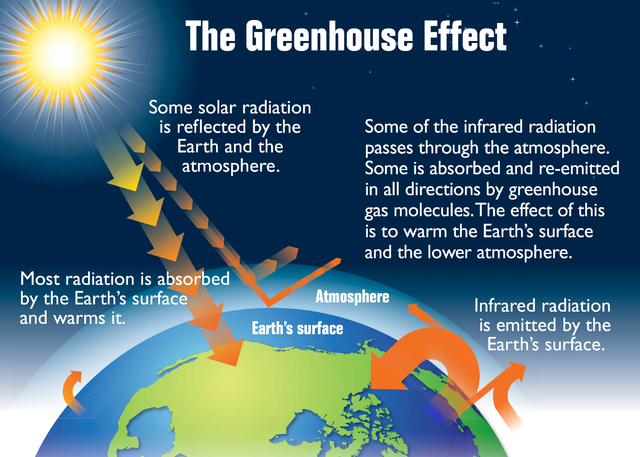
Arrhenius’s predictions did not gather much attention for decades. Scientists who did consider it, like British physicist G.S. Callendar in the 1930s, concluded that excess CO2 created by humans would be absorbed by the oceans. A paper by two scientists from the Scripps Institute of Oceanography in California, Roger Revelle and Hans Suess, in 1957 contradicted this assumption (McKibben 1990, 9). They demonstrated that most of the CO2 released into the air by burning fossil fuels would stay there and gradually warm the planet. This was the beginning of warnings of a ‘greenhouse effect’. Combined with Rachel Carson’s warnings about chemical pollution in The Silent Spring published in 1962, a growing awareness of ‘the environment’ as a cause for public concern formed part of 1960s social movements in the USA and Europe.
Environmental science owes much to nuclear proliferation, as much early research on the atmosphere was funded by the US military to gauge the best conditions for and potential consequences of the detonation of nuclear weapons (Lepore 2017). It was not only the US military, there is evidence that corporations involved in fossil fuel extraction, such as ExxonMobil, knew as early as 1977 that the burning of fossil fuels led to global warming and spread disinformation to cover it up so as to continue profiting from it (Hall 2015). As well as being directly undermined by industry, awareness of anthropogenic climate change has been hampered by assumptions of gradualism. The long timescales of earth processes provide a false sense of security that climatic change can only happen as slowly and gradually as continental drift. Environmentalist Bill McKibben argues to the contrary that enormous events can happen rapidly, and civilisations can fall in the space of years not aeons (1990, 5). He claims that we are already at the end of nature.
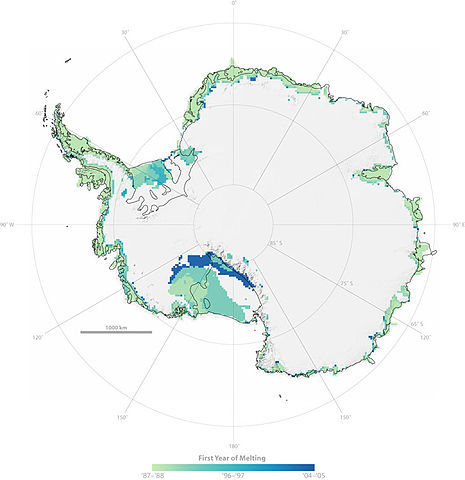
Climate scientist Joseph Romm predicts that climate change will have a greater impact this century than the internet has had (2016, 251). For Romm, the transition to a low carbon economy is inevitable, and likely will not come quickly enough to forestall a rise in temperature of 2℃. In his view, we will suffer serious impacts to human life because of climate change and these must be planned for and adjusted to. Climate change has shifted from being a ‘development’ issue in the eyes of the United Nations to a ‘security issue’, one that impacts not just national security but human security, reflecting its status as an existential threat to the species (Scheffran et al 2012, 11). The latest synthesis report released by the UN Intergovernmental Panel on Climate Change in 2014 stated baldly that ‘human influence on climate systems is clear, and recent anthropogenic emissions of greenhouse gases are the highest in history. Recent climate changes have had widespread impacts on human and natural systems’ (IPCC 2014).
This shift in tone and urgency from climate scientists and international bodies on climate change has fuelled even more apocalyptic predictions in the popular media. In a recent article titled ‘The Uninhabitable Earth’, journalist David Wallace-Wells painted a terrifying portrait of a world so hot that humans die of heat stress, large swathes of arable land are desertified causing mass hunger, melting permafrost releases previously dormant plagues, smog so thick it suffocates, and the inevitable breakdown of human society into war and chaos (Wallace-Wells 2017). The article created some pushback from various sources, including a number of climate scientists (Climate Feedback 2017, Mooney 2017, Meyer 2017). However, the doomsday prophecy of cataclysmic climate change is clearly a well-established form of contemporary millenarianism.
The reality of climate change, David Puttnam on Ted X

Beliefs
Scientific models based on data and evidence provide predictions for the future. What will actually happen is still unknown and dependent on a number of factors. Beliefs in relation to environmental millenarianism fill in this area of doubt between the prediction and the future.
One of the earliest writers on the environment and challenges presented by climate change, Bill McKibben, foresees the end of ‘nature’ as we know it (1990, 7). By this he means the belief that nature is separate from humans and eternal. He sees not an end of the world but the end of an idea about the human relationship to the world. This relationship is modelled on the biblical idea of dominion, that humans were created separately from the rest of nature and have dominion, control, and mastery over it, that nature was created by God for human use (White 1967). This view is anthropocentric, in that it elevates humans above all other aspects of the planet.
Anthropocentrism was rejected by philosopher Arne Naess in formulating deep ecology, which claims all species are inherently worthwhile (Luke 2002). The whole of nature is part of a moral community. In a biocentric view, all species are equal and have an equal right to life. For radical environmentalist groups like Earth First!, this meant that human destruction of wilderness and biodiversity had led to a ‘spiritually sick’ society (Lee 1997, 124). The end of industrial society was, for them, inevitable and desirable. It was their moral responsibility to aid this with direct action to protect the environment.
Environmentalist writer Paul Kingsnorth echoes this sentiment to a lesser degree when he suggests that we are better off not saving society because this will create a new society that lives more harmoniously with nature (2009). Kingsnorth is part of the Dark Mountain project whose manifesto ‘Uncivilisation’ calls for a revision of the ‘myths’ of progress and separation of nature in favour of a deeper ecological engagement. Saving the world means a new kind of civilisation, one that is no longer based on economic growth and industrial production. Sustainable development is not possible. The crash of industrial society is inevitable and will entail a radically different form of living in order to continue human survival.
Collapse theorists like Kingsnorth are predicting the end of a world, a world of material comforts, plentiful energy, and abundant food, but the continuance of the biosphere and humanity in some form. These theories seem fringe because they go against stories of endless economic growth and limitless human potential. Ecophilosopher Paul Reid-Bowen observes that for some it seems easier to imagine the end of the world than the end of capitalism (2014, 20). Apocalyptic scenarios are more believable than a collapse of industrial society.
Al Gore on Climate Change optimism, Ted Talk
The perspective of many mainstream environmentalists is one of optimism and hope. Their messages convey the belief that with the right combination of technological innovation, government regulation, and changes to individual consumption, climate change impacts will be minimised. The most prominent environmentalist who embodies this perspective is Al Gore, whose documentaries An Inconvenient Truth and An Inconvenient Sequel balance alarm at the present level of emissions with belief in the ability of humans to change their world for the better before catastrophe strikes.
An Inconvenient Truth trailer

Millennial Beliefs
Climate scientists often try to avoid apocalyptic language, fearing that it will be counterproductive. However, in recent years this has changed as the communication about the level of danger presented by climate change has been weak and the response from governments minimal. Reid-Bowen calls the language of apocalypse ‘pragmatic’ at the present time (2014, 21). It is a way of spurring political and social action on the issue.
Millennialism is more strongly associated with radical environmentalists. Earth First! is an ‘ecological apocalyptic movement (Lorentzen 1997, 144). The beliefs that the group held in its early phase in the 1980s had five characteristics of millennialism:
- Believers awaited an imminent apocalypse.
- This apocalypse would end the current social order, industrial capitalism.
- Believers formed a group of ‘elect’ whose right-thinking in understanding the crucial importance of wilderness enabled them to prepare the Earth for the impending apocalypse by preserving what little wilderness remained.
- The end of industrial capitalism would usher in the ultimate, or final, stage of human history.
- This stage would be a golden age in which species life in the biosphere would be balanced, wilderness would reemerge, and humans would live in harmony with their environment (Lee 1997, 128).
This belief system reproduces the millennial structure of an end to the current corrupt order and the renewal of the world according to believers’ ideals.
According to political scientist Martha F. Lee, the millennialism in Earth First! ideology created divisions in the movement (1997, 129). A number of the first generation of adherents came to believe that there would be no humans left after transformation. Their millennialism became apocalyptic. Millennialism privileges a human role in stewarding planetary changes, but they no longer saw a place for humans. Yet as the movement grew from a few hundred to thousands of members, many of the second generation did not share the same apocalyptic worldview. They were more social-justice-oriented activists. They believed humans change to live in harmony with the environment. This would save the world and allow all humans equal place in the new order. A schism in the movement meant many of the first generation left Earth First! The movement continues
today focusing on environmental and social justice issues.
Earth First! The Politics of Radical Environmentalism

Practices
The practices employed by environmentalists range from coordinated political action in sponsoring legislation and legal challenges aimed at protecting the environment to direct action that can be destructive and illegal. The most notorious set of practices employed by radical environmentalists is monkeywrenching. This involves damaging or sabotaging industrial equipment to protect the environment. It is named after the 1975 novel by environmentalist and writer Edward Abbey, The Monkey Wrench Gang. It is also called ecotage, or from a positive perspective, ecodefense, or from a negative perspective, ecoterrorism.
View a video with Edward Abbey and Earth First! here
The manual Ecodefense (1993) outlines the methods, tactics, and range of monkeywrenching. It can be as simple as tree spiking, hammering nails into trees to damage the blades of saws to make logging difficult and costly. It can be as complex as sabotaging whaling ships so they sink. It can involve disabling construction vehicles, plugging waste discharge pipes, and closing roads. The manual involves detailed steps and diagrams to explain how to take a variety of actions to protect the environment. The first action of Earth First! was to release a banner with a black crack on it over Glen Canyon Dam. This symbolic protest against the dam began a wave of ecological sabotage in the tradition of Luddism and the fictional characters in The Monkey Wrench Gang. Dave Foreman, a founder of Earth First!, called monkeywrenching a ‘sacrament’ and ‘a form of worshipping the earth’ (Lee 1997, 128).
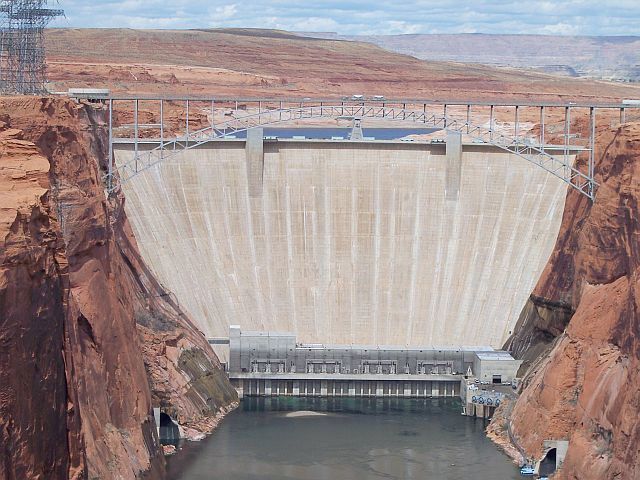
Radical environmentalists defend damaging and destroying private property as a means to protect the planet. Edward Abbey argued that environmentalists are morally justified to take whatever means necessary to protect the remaining wilderness, likening it to the legal doctrines that justify a homeowner in taking any necessary measures to defend his or her home from intruders. It is a form of self-defence against attack. The wilderness is under attack from the ‘industrial megamachine’, which is destroying it for short term profits (Abbey 1993, 18). Damage to private property is seen as necessary, even heroic. This justification is rejected by governments, industry, and mainstream environmental organisations. This raises the question of whether laws enshrining private property over public use of common resources are morally justified. It is an issue that distinguishes radical from mainstream environmentalists.
Radical environmentalists claim that they break the law out of opposition to a moral wrong. They use the example of abolitionists opposing slavery, arguing that, morally, trees cannot be owned any more than slaves. This is a practical working out of the biocentrism in deep ecology. However, this moral argument falters for many when injury is caused to humans. In 1987, a worker in Louisiana-Pacific’s Colverdale mill was lacerated by fragments of a saw shattered on a tree spike. However, radical environmentalists argue that government and industry also break the law in regards to environmental and worker safety regulations frequently, causing more damage than monkeywrenching, and they profit from it (Manes 1990, 178–179).
In the UK, radical environmentalist actions in the 1990s centred on the anti-roads movement. Direct action protested new roads in Twyford Down in Hampshire, extensions to the M65 and M11 motorways, and other roads. ‘Peace camps’ were formed, blocking the proposed routes. Some activists camped in trees to prevent them from being cut down to make way for roads. The media focused on one activist, Daniel Hooper, known as ‘Swampy’, who was a tunneller and part of the A30 protest camp in Fairmile, Devon. He dug a series of tunnels underneath the site and resisted eviction by the police. When this camp was evicted in January 1997, it was the effective end to the anti-roads movement (Wall 1999). There were subsequent protest camps against the expansion of Manchester Airport and the proposed addition of a third runway at Heathrow Airport in the 2000s.
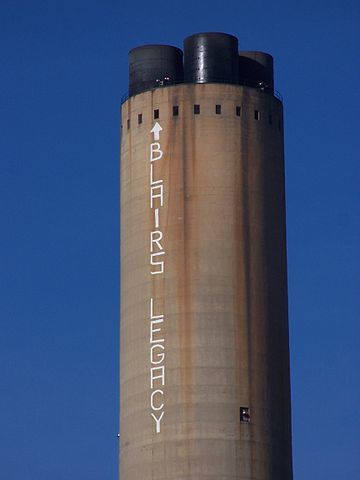
Mainstream environmentalist action focuses on less drastic measures such as pressure group lobbying to achieve pro-environment regulations and legislation. In terms of climate change, much of the focus has been on the responsibility of individuals to save the environment. Changes in consumer behaviour are centred on environmentalist practices of carbon offsetting and zero waste (Clark 2011, Clark 2016). For example, a recent study calculated that the actions which would have the greatest impact on reducing personal emissions were having one less child, living car-free, avoiding air travel, and eating a plant-based diet (Wynes and Nicholas 2017). This places the onus on the individual for mitigating climate change.
However, the impact that individual choices can make is often negligible if billions of other people on the planet are not making the same choices. The ‘green growth’ or Transition Movement advocates switching from a carbon-based economy to a non-carbon based economy through the adoption on a societal level of renewable energy sources, recycling, and changes in agricultural practices. This movement is often grassroots, focusing on small-scale communities transitioning to self-sufficiency through growing their own food, cooperatively owning power stations, and establishing local currencies (Flintoff 2013). However, Rupert Reed of the environmentalist think tank, Green House, argued at the CenSAMM conference in June 2017 that however vital the Transition Movement is, it is not enough to mitigate climate change; instead it can be seen as a potential seed of a new post-growth society.
Coordinated intergovernmental action on an international scale became a realistic prospect for the first time in 2015 with the signing of the United Nations Framework on Climate Change, known as the Paris Agreement. 198 nations have signed the Agreement, which aims to keep global warming well below 2℃ above preindustrial levels and to pursue efforts to limit the average temperature increase to 1.5℃. However, the emissions cuts promised in the Agreement are not enough to keep warming below a 2℃ increase and countries can withdraw without consequence (Le Page 2015). This means there is little that can be done to enforce the promises made under the Agreement. Climate scientist James Hansen called it ‘worthless words. There is no action, just promises’ (Milman 2015). Hansen argues in favour of a global tax imposed on each tonne of carbon released from the countries with the highest emissions levels. The Paris Agreement was dealt another blow when President Donald Trump withdrew the United States from it in June 2017 (Galston et al 2017). However, a number of US cities, companies, and states promised to maintain the Paris goals after this announcement, as did the major carbon emitting nations of China, India, and the EU (Tabuchi and Fountain 2017).
View an interactive map of projected sea level rise here
In the absence of political leadership on climate change, some have tried legal and business practices to force action to mitigate its effects. In 2015, Our Children’s Trust helped file a lawsuit on behalf of 21 youths aged 10 to 21 against the US government for actions that have not only caused climate change which violates the younger generation’s constitutional rights to life, liberty, and property but also having failed to protect essential public trust resources (Parker 2017). The trial is set for February 2018. Similar lawsuits have already been won in Pakistan, Austria, and South Africa; cases are ongoing in Belgium, the Netherlands, and New Zealand. A UN report found over 900 climate lawsuits in 20 different countries (Schwartz 2017).
Industry and commerce are generally drivers of carbon emissions, and the fossil fuel industry in particular has been the main source of opposition to environmentalists. Environmental measures are often viewed as detrimental to profits and therefore not pursued. However, in the Netherlands climate change is seen as a business opportunity, particularly in terms of water management to deal with rising sea levels (Kimmelman and Hamer 2017). The development of solar and other renewable forms of power is a growing sector of industry, suggesting there is a business incentive in environmentalist practices. However, climate scientist James Hansen says that climate change is already too far advanced for renewable energy sources to make an appreciable difference and that we must develop measures to remove carbon from the atmosphere (Johnston 2017). The amount of oil, gas, and coal already in production or being developed, according to oil industry figures, if it is burnt, will create emissions that will raise global warming above a 2℃ increase on preindustrial levels (Monbiot 2017). This would mean that if the emissions levels of the Paris Agreement were to be met there would need to be a total and immediate moratorium on all new drilling, fracking, and mining of fossil fuels. This has led some to argue that action on climate change cannot be on the individual level but has to be a collective change in the way corporations are allowed, and often subsidised, to extract and burn fossil fuels (Lukacs 2017). This approach is backed up by the Carbon Majors Report which finds that just 100 companies are responsible for 71% of global carbon emissions (Riley 2017).

Controversies
One of the most controversial groups in environmental millenarianism is the US radical environmental group Earth First! Founded in April 1980 by five disaffected conservationists, the group pioneered the use of monkeywrenching, or ecological sabotage, as a means to protect the environment. Their actions are seen as destructive and illegal by industry and government and as counterproductive and ineffective by mainstream environmentalists. Earth First! as a movement split in 1987 after an article in their journal recognised the potential benefits for the environment of AIDS as a way of culling the human population. In a biocentric belief system, the AIDS virus has as much right to live and an equal moral status to human beings. The second generation of Earth First! members was horrified by this, finding it fascist and cruel. The movement was further weakened when in 1988 the FBI infiltrated the Arizona based group and arrested five, including founder Dave Foreman. Earth First! under Judy Bari moved more towards the mainstream and renounced tree spiking in 1990. It continues as an environmental and social justice movement that still foresees an imminent ecological crisis but hopes that small ecologically conscious communities will survive it (Lee 1997).
On 13 May 1985, Philadelphia police dropped a bomb on a residential house belonging to MOVE, a group of radical black environmentalists. Six adults and five children were killed. The ensuing fire from the bomb destroyed 61 houses, leaving 250 people homeless. MOVE was founded in 1972. It numbered between 50 and 150 people, living in and around Philadelphia. From its founding, it was attacked in the media and by local authorities. The group practised communal living and believed in the moral equivalence of humans and animals. This meant they fed stray dogs. Their children were often naked. They saw American society as corrupted, especially by technology, and destroying the environment. Industry was poisoning the air, water, and earth. They believed they had to use revolutionary action in order to stop humans destroying the planet. In the media they were ‘portrayed as a violent back-to-nature cult led by a supposed messianic madman, John Africa’ (Harry 1987, 7). They were called filthy, a danger to their children, and their houses infested with vermin. In previous confrontations with the police, they refused to stand down, leading to a 50-day siege in 1978. In the May 1985 attack, journalist Margot Harry claims MOVE members were not warned about the attack or given time to evacuate in what she calls a ‘domestic military programme’ (1987, 22). MOVE were environmental utopians, trying to live in a way they believed would assist in averting an environmental apocalypse and model a new form of society.
From 1978 to 1995, Theodore Kaczynski, also known as the Unabomber, sent 16 package bombs seriously injuring 12 people, and killing three. Educated at Harvard University, Kaczynski worked at the University of California-Berkeley as a professor of mathematics, before leaving academia to live in a cabin in the woods in Montana. He made the bombs himself and mailed them to government, university, and airline workers. In the ‘Unabomber Manifesto’ (1995), released to newspapers shortly before his arrest, Kaczynski outlined a radical environmentalist philosophy of the destructiveness of technology and the inevitable end of industrial society. His brother recognised the writing and turned him in to the FBI. He was sentenced in 1998 to life in prison without the possibility of parole. To radical environmentalists, he is seen as a prisoner of war whose only crime was protecting the earth. To others, he is the violent working out of environmentalist biocentrism and an ecoterrorist (Chase 2003). Kaczynski is an example of a ‘forcer of the end’, using violence to try to bring on the end of the current corrupt social order, in this case industrial society, and start a new golden age of biocentrism.

Given the consensus of 95% of climate scientists that climate change is happening and is caused by human activity, it has become controversial to reject their belief. Climate change deniers say that observed differences in the temperature are normal atmospheric changes and not a sign of future devastation. Former US President Donald Trump is a high profile climate change denier, calling it a ‘hoax’ perpetuated by the Chinese to gain economic advantages (Runciman 2017). The USA, UK, and Australia are found to have the highest levels of climate change denialism (St Fleur 2015).
What the media isn’t telling you about climate change

Further Information
Academic References
Burger, M. & Gundlach, J. 2017. “The Status of Climate Change Litigation the Status of Climate Change Litigation: A Global Review.” United Nations Environment Programme, May. Available at: http://columbiaclimatelaw.com/...
Chase, A. 2003. Harvard and the Unabomber: The Education of an American Terrorist, New York: W.W. Norton & Co.
Fava, S. 2013. Environmental Apocalypse in Science and Art: Designing Nightmares, London: Routledge.
Griffin, P. 2017. The Carbon Majors Database: CDP Carbon Majors Report 2017. Climate Account Institute, July. Available at: https://b8f65cb373b1b7b15feb-c...
Harry, M. 1987. “Attention MOVE! This is America!” Race & Class, XXVIII(4): 5–28.
Kolbert, E. 2014. The Sixth Extinction: An Unnatural History, London: Bloomsbury.
Lee, M. F. 1997. “Environmental Apocalypse: The Millennial Ideology of ‘Earth First!’” Pp. 119–138. In T. Robbins & S. J. Palmer, eds. Millennium, Messiahs, and Mayhem: contemporary apocalyptic movements. London: Routledge.
Lorentzen, L.A. 1997. Phallic Millennialism and Radical Environmentalism: The Apocalyptic Vision of Earth First! Pp. 144–151. In C. B. Strozier & M. Flynn, eds. In The Year 2000: Essays on the End. New York: New York University Press.
Luke, T.W. 2002. “Deep Ecology: Living as if nature mattered.” Citation Classics and Foundational Works, 15(2): 178–186.
Manes, C. 1990. Green Rage: Radical Environmentalism and the Unmaking of Civilization, London: Little, Brown.
McKibben, B. 1990. The End of Nature, London: Penguin.
Reid-Bowen, P. 2014. “Contesting Capitalist Sorcery: ‘Peak Everything’ as Apocalyptic Prophecy.” Apocalypse and Ghosts 6: 15–26.
Romm, J. 2016. Climate Change: What Everyone Needs to Know, Oxford: Oxford University Press.
Scheffran, J. et al. eds. 2012. Climate Change, Human Security and Violent Conflict: Challenges for Societal Stability, New York: Springer.
Wall, D. 1999. Earth First! and the anti-roads movement: radical environmentalism and comparative social movements, London: Routledge.
Weinberg, A.M. 1999. “Scientific Millenarianism.” Futures, 31(9–10): 929–936.
White, L. 1967. “The Historical Roots of Our Ecologic Crisis.” Science (New York, N.Y.), 155(3767): 1203–7. Available at: http://www.ncbi.nlm.nih.gov/pubmed/17847526.
Wynes, S. & Nicholas, K.A. 2017. “The Climate Mitigation Gap: Education and Government Recommendations Miss the Most Effective Individual Actions.” Environmental Research Letters, 12(7): 74024. Available at: http://stacks.iop.org/1748-9326/12/i=7/a=074024?key=crossref.03823b1b77b6f51ed344568b22e48bad.
Popular Works
Abbey, E. 1993. “Forward!” Pp. 18–19. In Ecodefense: a field guide to monkeywrenching. Abbzug Press.
Abbey, E. 1975. The Monkey Wrench Gang, London: Penguin.
Kaczynski, T. 1995. “Industrial society and its future.” Washington Post, p.SS1. Available at: http://web.cecs.pdx.edu/~harry/ethics/Unabomber.pdf.
Various Authors. 1993. Ecodefense: A Field Guide to Monkeywrenching 3rd ed., Abbzug Press.
Media Articles
Clark, D. 2011. A complete guide to carbon offsetting. The Guardian, September 16. Available at: https://www.theguardian.com/en...
Clark, L. 2016. Zero-waste bloggers: the millennials who can fit a year’s worth of trash in a jar. The Guardian, April 22. Available at: https://www.theguardian.com/en...
Flintoff, J.-P. 2013. Local, self-sufficient, optimistic: are Transition Towns the way forward? The Guardian, June 15. Available at: https://www.theguardian.com/en...
Galston, W.A. et al. 2017. Trump’s Paris Agreement withdrawal: What it means and what comes next. Brookings Institute, June 1. Available at: https://www.brookings.edu/blog...
Hall, S. 2015. Exxon Knew about Climate Change Almost 40 Years Ago. Scientific American, October 26. Available at: https://www.scientificamerican...
Johnston, I. 2017. Carbon dioxide must be removed from the atmosphere to avoid extreme climate change, say scientists. The Independent, January 18. Available at: http://www.independent.co.uk/n...
Kimmelman, M. & Haner, J. 2017. The Dutch Have Solutions to Rising Seas. The World Is Watching. The New York Times, June 15. Available at: https://www.nytimes.com/intera...
Le Page, M. 2015. Paris climate deal is agreed – but is it really good enough? New Scientist, December 12. Available at: https://www.newscientist.com/a...
Lepore, J. 2017. The Atomic Origins of Climate Science. The New Yorker, January 30. Available at: http://www.newyorker.com/magaz...
Lukacs, M. 2017. Neoliberalism has conned us into fighting climate change as individuals. The Guardian, July 17. Available at: https://www.theguardian.com/en...
Meyer, R. 2017. Are We as Doomed as That New York Magazine Article Says? The Atlantic, July 10. Available at: https://www.theatlantic.com/sc...
Milman, O. 2015. James Hansen, father of climate change awareness, calls Paris talks “a fraud.” The Guardian, December 12. Available at: https://www.theguardian.com/en...
Monbiot, G. 2016. No fracking, drilling or digging: it’s the only way to save life on Earth. The Guardian, September 27. Available at: https://www.theguardian.com/co...
Monbiot, G. & Kingsnorth, P. 2009. Is there any point in fighting to stave off industrial apocalypse? The Guardian, August 17. Available at: https://www.theguardian.com/co...
Mooney, C. 2017. Scientists challenge magazine story about “uninhabitable Earth.” Washington Post, July 12. Available at: https://www.washingtonpost.com...
Parker, L. 2017. “Biggest Case on the Planet” Pits Kids vs. Climate Change. National Geographic, March 17. Available at: http://news.nationalgeographic...
Riley, T. 2017. Just 100 companies responsible for 71% of global emissions, study says. The Guardian, July 10. Available at: https://www.theguardian.com/su...
Runciman, D. How climate scepticism turned into something more dangerous. The Guardian, July 7. Available at: https://www.theguardian.com/environment/2017/jul/07/climate-change-denial-scepticism-cynicism-politics
Schwartz, J. 2017. Students, Cities and States Take the Climate Fight to Court. The New York Times, August 10. Available at: https://www.nytimes.com/2017/08/10/climate/climate-change-lawsuits-courts.html
St. Fleur, N. 2015. Where in the world is climate change denial most prevalent? The New York Times, December 11. Available at: https://www.nytimes.com/interactive/projects/cp/climate/2015-paris-climate-talks/where-in-the-world-is-climate-denial-most-prevalent
Tabuchi, H. & Fountain, H. 2017. Bucking Trump, These Cities, States and Companies Commit to Paris Accord. The New York Times, June 1. Available at: https://www.nytimes.com/2017/06/01/climate/american-cities-climate-standards.html
Wallace-Wells, D. 2017. When will climate change make the earth too hot for humans? New York Magazine, July 9. Available at: http://nymag.com/daily/intelli...
Various Authors. 2017. Scientists explain what New York Magazine article on “The Uninhabitable Earth” gets wrong. Climate Feedback. Available at: https://climatefeedback.org/ev...
Websites
Landmark U.S. Federal Climate Lawsuit. Our Children’s Trust. Available at: https://www.ourchildrenstrust....
United Nations Framework Convention on Climate Change: The Paris Agreement, Available at: http://unfccc.int/paris_agreem...
Green House Think Tank. Available at: http://www.greenhousethinktank...
Earth First! Available at: https://earthfirst.org.uk/acti...
The Dark Mountain Project. Available at: http://dark-mountain.net/
IPCC Fifth Assessment Report—Synthesis Report, Available at: https://www.ipcc.ch/report/ar5...
© Susannah Crockford 2021

Note
This profile has been provided by Inform, an independent charity providing information on minority and alternative religious and/or spiritual movements. Inform aims to deliver accurate, balanced, and reliable data. It relies on social scientific research methods, primarily the sociology of religion. Inform welcomes feedback, comments, corrections, or further information at inform@kcl.ac.uk.







